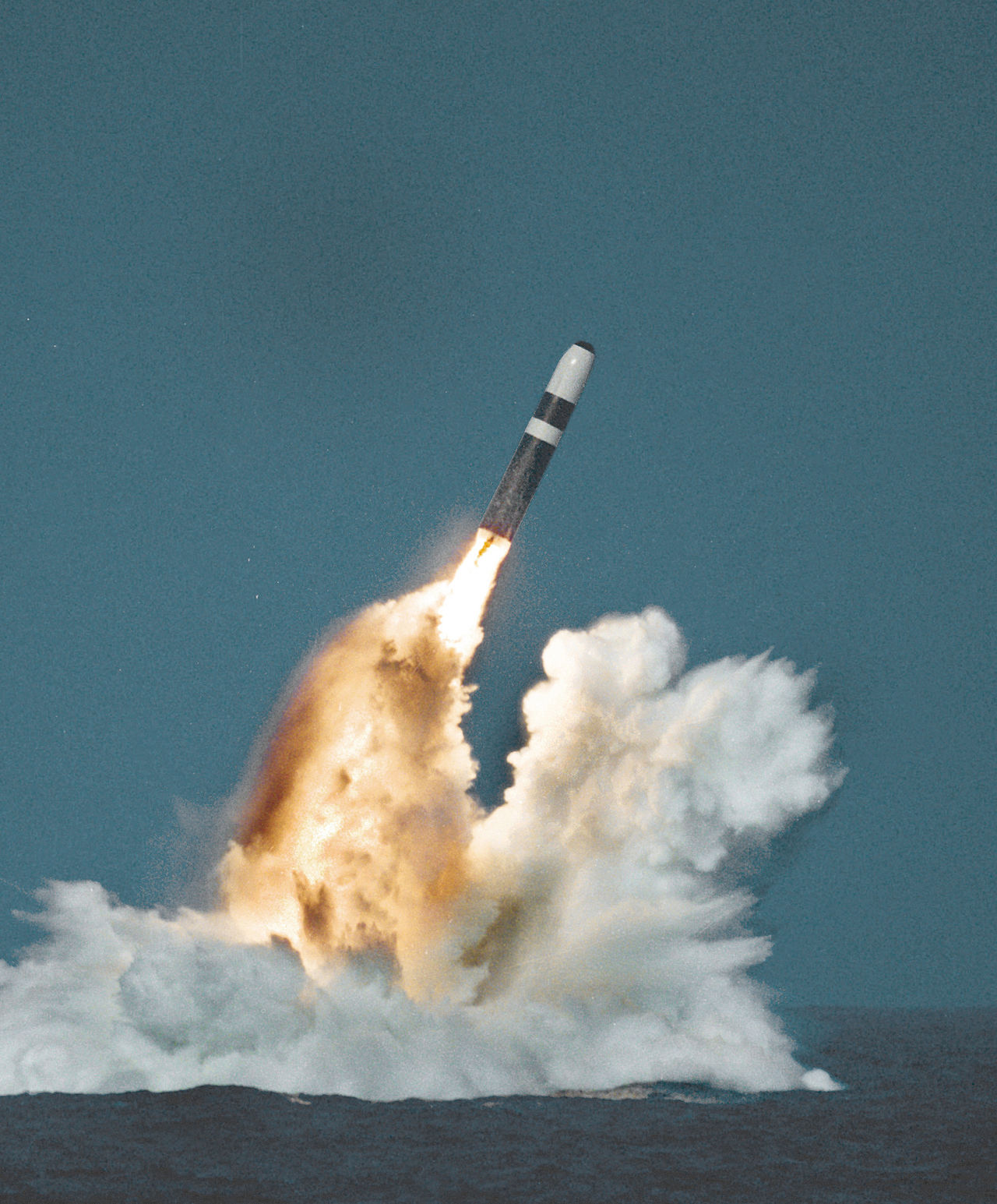This article is included in these additional categories: BAE | Boeing | Contracts - Awards | FOCUS Articles | General Dynamics | L3 Communications | Lockheed Martin | Missiles - Ballistic | Northrop-Grumman | Other Corporation | Raytheon | Submarines | Support & Maintenance | Support Functions - Other | USA
Trident II D5 Missile: Keeping Up with Changing Times

March 5/24: Lockheed Martin Space won a $109.3 million contract to support the integration of the Trident II (D5) Missile and reentry subsystems into the Common Missile Compartment for the US/UK Columbia/Dreadnought submarine construction programs. Work is expected to be complete by February 28, 2029. Strategic Systems Programs, Washington, DC, is the contracting activity.
For more on this and other stories, please consider purchasing a membership.
If you are already a subscriber, login to your account.
If you are already a subscriber, login to your account.
Trident II D5 Test Launch (click to view full) Nuclear tipped missiles were first deployed on board US submarines at the height of the Cold War in the 1960s, to deter a Soviet first strike. The deterrence theorists argued that, unlike their land-based cousins, submarine-based nuclear weapons couldn’t be taken out by a surprise first […]

One Source: Hundreds of programs; Thousands of links, photos, and analyses
DII brings a complete collection of articles with original reporting and research, and expert analyses of events to your desktop – no need for multiple modules, or complex subscriptions. All supporting documents, links, & appendices accompany each article.
Benefits
- Save time
- Eliminate your blind spots
- Get the big picture, quickly
- Keep up with the important facts
- Stay on top of your projects or your competitors
Features
- Coverage of procurement and doctrine issues
- Timeline of past and future program events
- Comprehensive links to other useful resources
Monthly
$59.95/Per Month
- Charged Monthly
- 1 User
Quarterly
$50/Per Month
- $150 Charged Each Quarter
- 1 User
Yearly
$45/Per Month
- $540 charged each year
- 1 User
2 years
$35/Per Month
- $840 Charged every other year
- 1 User
